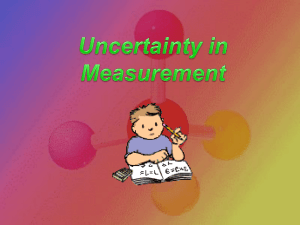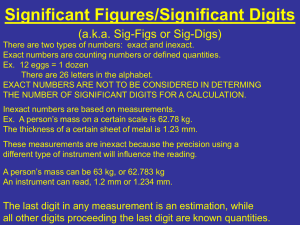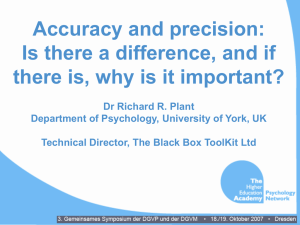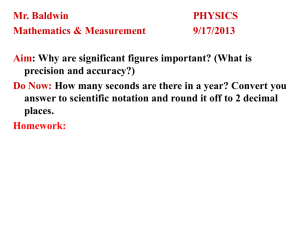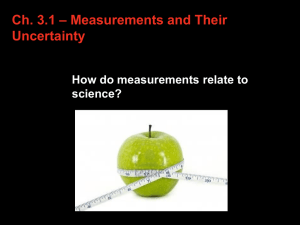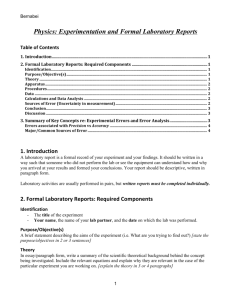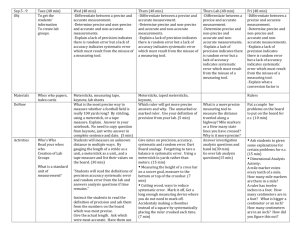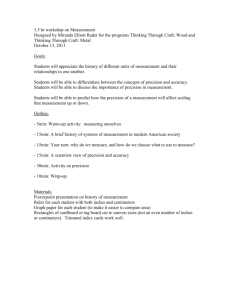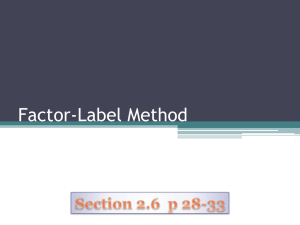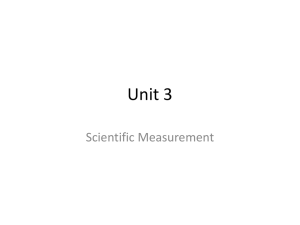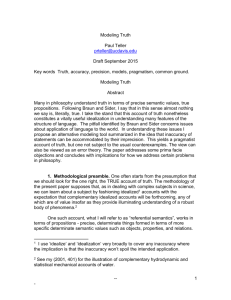Measurement: Estimation and precision
advertisement
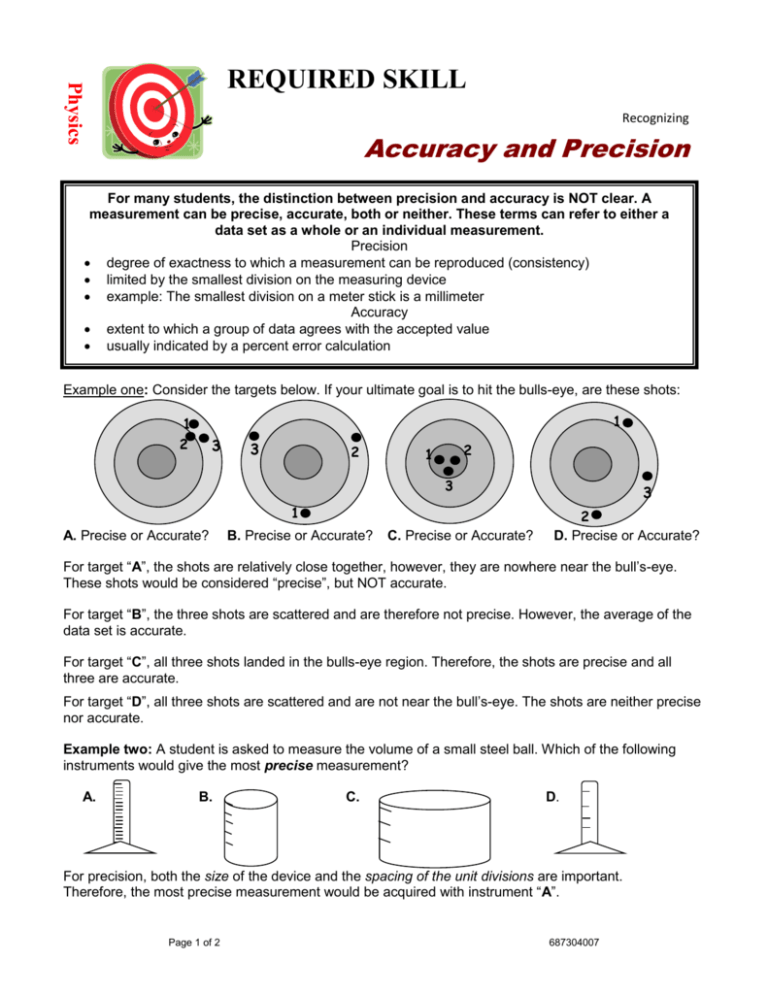
Physics REQUIRED SKILL Recognizing Accuracy and Precision For many students, the distinction between precision and accuracy is NOT clear. A measurement can be precise, accurate, both or neither. These terms can refer to either a data set as a whole or an individual measurement. Precision degree of exactness to which a measurement can be reproduced (consistency) limited by the smallest division on the measuring device example: The smallest division on a meter stick is a millimeter Accuracy extent to which a group of data agrees with the accepted value usually indicated by a percent error calculation Example one: Consider the targets below. If your ultimate goal is to hit the bulls-eye, are these shots: 1 1 2 3 3 2 2 1 3 1 A. Precise or Accurate? B. Precise or Accurate? C. Precise or Accurate? 3 2 D. Precise or Accurate? For target “A”, the shots are relatively close together, however, they are nowhere near the bull’s-eye. These shots would be considered “precise”, but NOT accurate. For target “B”, the three shots are scattered and are therefore not precise. However, the average of the data set is accurate. For target “C”, all three shots landed in the bulls-eye region. Therefore, the shots are precise and all three are accurate. For target “D”, all three shots are scattered and are not near the bull’s-eye. The shots are neither precise nor accurate. Example two: A student is asked to measure the volume of a small steel ball. Which of the following instruments would give the most precise measurement? A. B. C. D. For precision, both the size of the device and the spacing of the unit divisions are important. Therefore, the most precise measurement would be acquired with instrument “A”. Page 1 of 2 687304007 Measurement: Estimation and Precision How do you know the appropriate precision to use when making a measurement? How do you distinguish between measurements that are the same and ones that are not? Rules for estimation and precision As a general rule, read and record measurements as precisely as possible. It is easier to round off than to re-measure. When using an analog scale (such as a meter stick, a graduated cylinder, a spring scale, or a voltmeter), you should be prepared to estimate to one decimal place beyond the smallest division. This is the MAXIMUM precision of the device. Example: A ruler has ten divisions between 1 and 2 cm. You can estimate one decimal place beyond the smallest division, or 0.01 cm. A typical reading could be 1.37 cm. It is sometimes impractical or unnecessary to be that precise. In that case, be prepared to justify the precision that you choose. You use a meter stick outdoors to measure the length of a car. It is impractical to measure to one decimal place beyond the smallest division of a millimeter under those conditions. You would probably choose to measure to the nearest centimeter. Sometimes you will be told the precision to which you should measure. Be sure to write down those measurements appropriately. When asked to measure the width of the lab table to the nearest centimeter, you record 36 cm, not 36.3 cm or 36.0 cm. For digital readouts such as digital balances, realize that the last digit will usually vary by at least ± one digit. Be prepared to justify your chosen precision. If you measured the mass of the same object three times on a digital balance, it is unlikely that you will have measurements that are exactly the same. Typical repeat measurements might be 530.2g, 530.1g and 530.3g. Page 2 of 2 687304007
